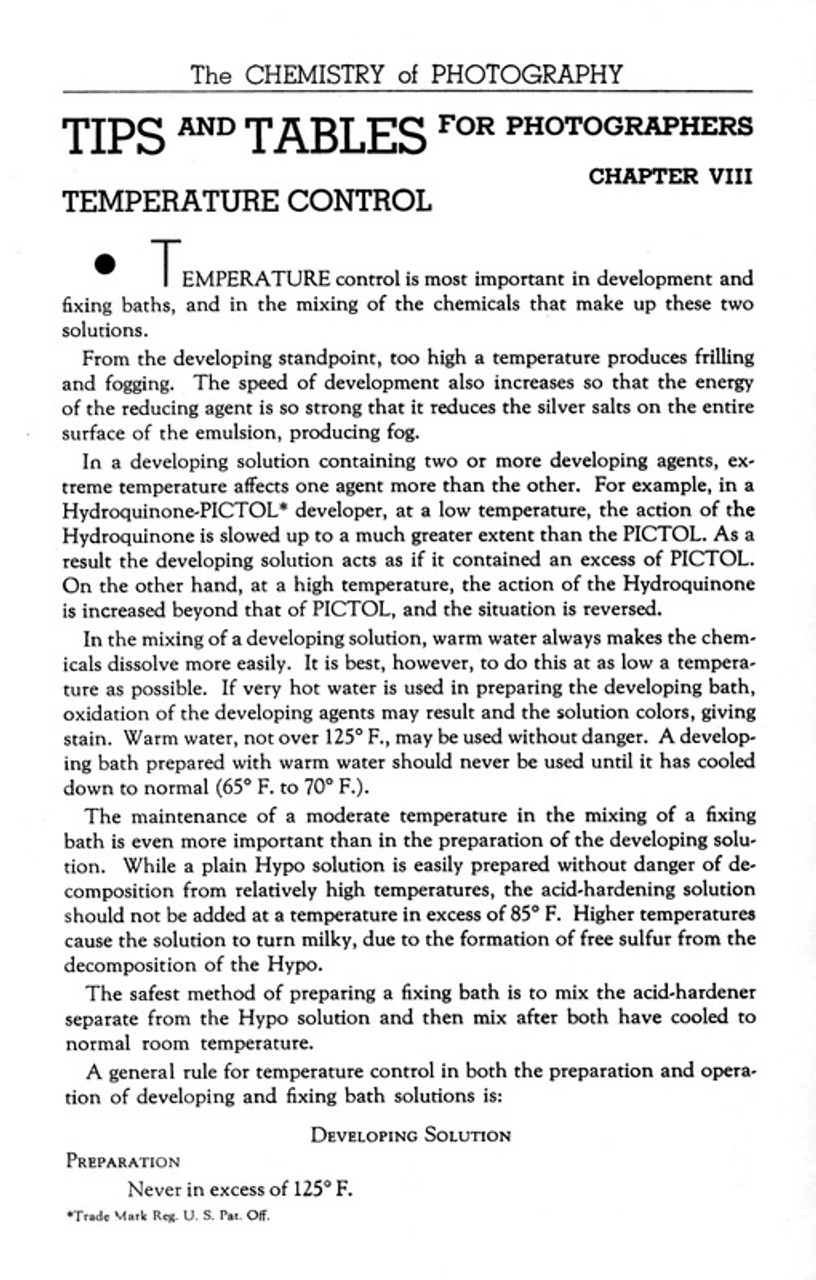Product Description
CHAPTER VIII
TEMPERATURE CONTROL
Temperature control is most important in development and fixing baths, and in the mixing of the chemicals that make up these two solutions.
From the developing standpoint, too high a temperature produces frilling and fogging. The speed of development also increases so that the energy of the reducing agent is so strong that it reduces the silver salts on the entire surface of the emulsion, producing fog.
In a developing solution containing two or more developing agents, extreme temperature affects one agent more than the other. For example, in a Hydroquinone-PICTOL* developer, at a low temperature, the action of the Hydroquinone is slowed up to a much greater extent than the PICTOL. As a result the developing solution acts as if it contained an excess of PICTOL. On the other hand, at a high temperature, the action of the Hydroquinone is increased beyond that of PICTOL, and the situation is reversed.
In the mixing of a developing solution, warm water always makes the chemicals dissolve more easily. It is best, however, to do this at as low a temperature as possible. If very hot water is used in preparing the developing bath, oxidation of the developing agents may result and the solution colors, giving stain. Warm water, not over 125° F., may be used without danger. A developing bath prepared with warm water should never be used until it has cooled down to normal (65° F. to 70° F.).
The maintenance of a moderate temperature in the mixing of a fixing bath is even more important than in the preparation of the developing solution. While a plain Hypo solution is easily prepared without danger of decomposition from relatively high temperatures, the acid-hardening solution should not be added at a temperature in excess of 85° F. Higher temperatures cause the solution to tum milky, due to the formation of free sulfur from the decomposition of the Hypo.
The safest method of preparing a fixing bath is to mix the acid hardener separate from the Hypo solution and then mix after both have cooled to normal room temperature.
A general rule for temperature control in both the preparation and operation of developing and fixing bath solutions is...(continued)
Photographic Topics Included in Chapter VIII Tips and Tables
- Temperature Control
- Differences in Action and Effect of Common Developing Agents
- Water: Its Importance and Methods of Purification
- Adding Correct Amount of Bromide
- Conversion Table for Units of Volume and Weight
- The Metric System & Avoirdupois Measurements
- A Simple Formula for Diluting Solutions
- Rules for Storing Chemicals
- Methods of Cleaning Trays and Tanks
- "Metol" Poisoning
- Removal of Developer Stains from Hands
- International Atomic Weights
- Why Monohydrated Carbonate?
- Carbonate Conversion Table from Anhydrous to MonoHydrated
*Trade Mark Reg. U.S. Pat. Off


